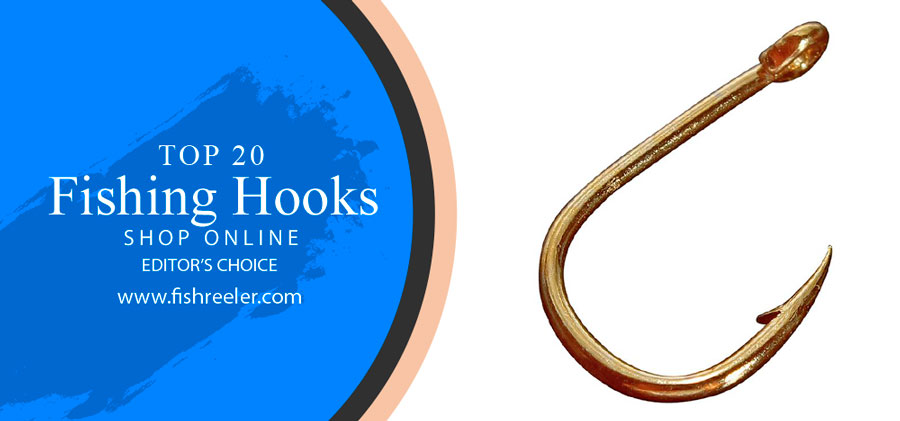
The Alluring Art of Fishing Hooks: A Deep Dive
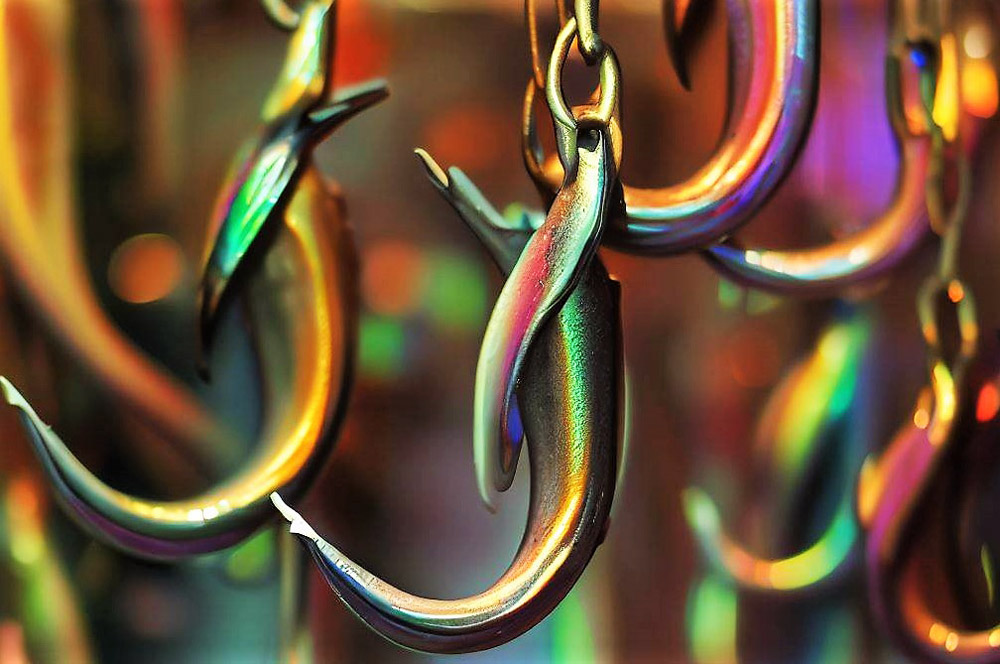
Setting the Hook: Your Entry Point to the Fascinating World of Fishing Hooks
Every fishing tale begins with an unsuspecting fish and an alluring hook. The tale of this hook, however, begins not in the water but on a crafting bench, designed to perfection, becoming a quiet hero in the hands of an angler.
The Silent Heroes of Angling: The Undeniable Significance of Fishing Hooks
Underrated and often overlooked, fishing hooks are as essential to angling as rods and reels. They are the critical interface between anglers and fish, a tool that has not only shaped human survival for millennia but also transformed the way we engage with nature for sport. Their simple, curved form belies their immense importance. With the right hook, a fishing trip can become an angler’s triumph; with the wrong one, it can quickly turn into a frustrating endeavor.
Your Guided Tour of the Vast Seas of Fishing Hooks
Our journey in this article will take us on a deep dive into the world of fishing hooks, their rich history, their subtle anatomy, the impressive array of their types, and the ways in which they can be maintained and used responsibly. Our objective is to not only enlighten you about this crucial piece of fishing equipment but also to guide you in selecting the right hook for your specific needs, ensuring that every fishing expedition is a rewarding one. Whether you’re a novice angler or a seasoned pro, we invite you to join us as we unravel the fascinating secrets of fishing hooks. After all, every great catch begins with the perfect hook.
History of Fishing Hooks
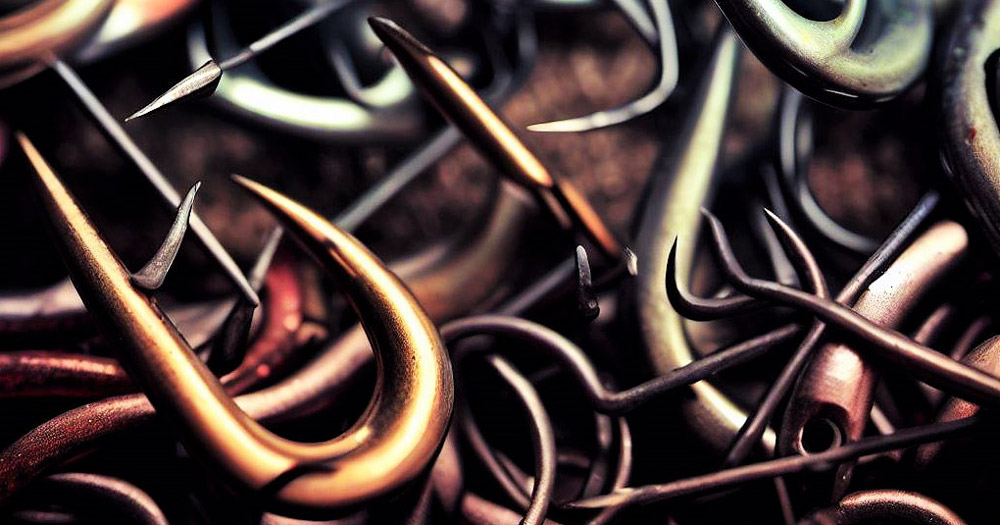
Casting Back in Time: The Ancient Origins of Fishing Hooks
Journeying back into the annals of history, we find that the art of fishing, along with the creation of the humble fishing hook, predates even the earliest civilizations. Primitive fishing hooks were crafted out of bone, wood, and even shells, evolving gradually as human skills and tool use advanced. The ancient Egyptians, known for their keen understanding of the Nile’s bounty, created hooks from bronze, while indigenous communities across the globe perfected the art of creating hooks from materials readily available in their environments.
These hooks were far from the standardized shapes we recognize today. Instead, they showcased a wealth of ingenuity and reflected the specific needs of the anglers who used them. From the simple gorge hook, a straight piece of material sharpened at both ends and baited in the middle, to the complex bent hooks fashioned by the Polynesians, the ancient world reveals a tapestry of fishing hook designs as varied as the cultures that created them.
The Modern Revolution: A New Era of Fishing Hook Innovation
The advent of the Industrial Revolution in the 19th century marked a turning point in the evolution of fishing hooks. Mass production became possible, leading to more standardized hook designs and sizes. The introduction of steel dramatically improved the durability and sharpness of hooks, while advancements in chemistry led to the development of rust-resistant coatings, dramatically increasing the lifespan of a hook.
The 20th and 21st centuries brought further refinements. Modern hooks are often fashioned from high-carbon steel, making them lighter yet stronger. Precision engineering has allowed for an incredible variety of shapes and sizes tailored to specific fishing scenarios and target species. Some hooks are chemically sharpened to achieve an almost surgical point, while others feature intricate designs to hold bait more securely or to improve the hook’s performance during the catch and release.
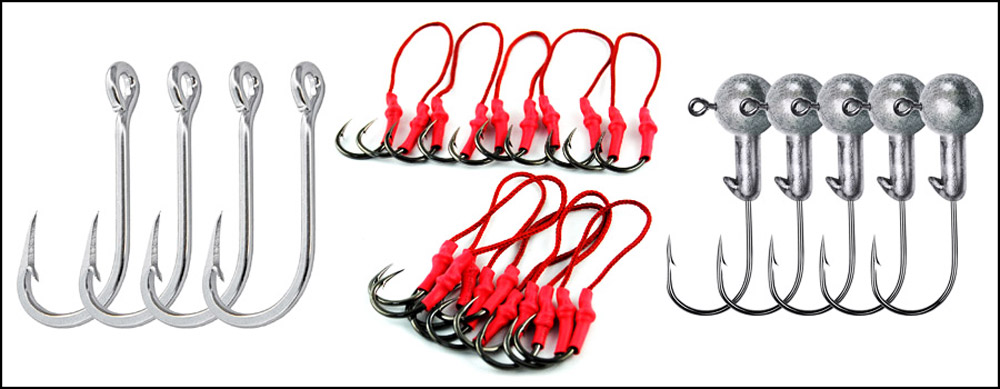
As our understanding of fish behavior has improved, so too has our ability to design hooks that minimize harm to fish, encouraging catch-and-release practices. From barbless hooks that reduce injury, to circle hooks designed to hook fish in the mouth rather than the gut, modern hook design reflects a growing awareness of our responsibility to conserve our aquatic resources.
From primitive tools crafted for survival to intricate designs tailored for sport and conservation, the fishing hook’s journey through history is a reflection of human ingenuity and our evolving relationship with the natural world.
Anatomy of a Fishing Hook
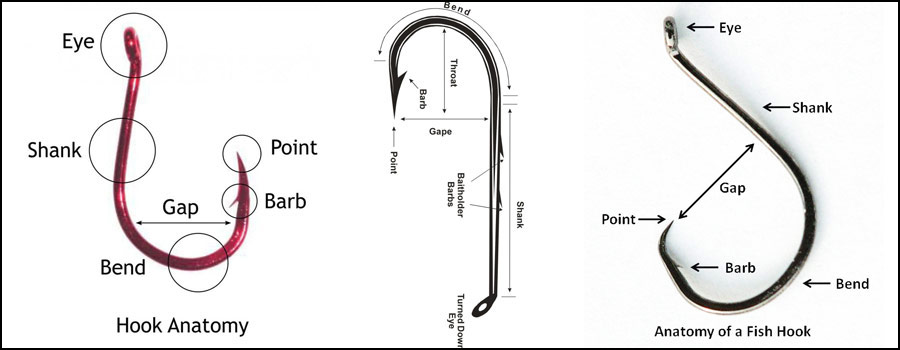
Each hook component plays an important role in fishing. Understanding shank length, clearance, bending, etc. will help you choose the best hook. It will also help you properly assemble your fishing tackle for your particular fishing trip (pond, fish species, season, etc.) so that you can catch more fish.
The Pieces of the Puzzle: Deconstructing the Fishing Hook
At first glance, a fishing hook appears to be a simple piece of metal. However, each hook is an intricate assembly of multiple parts, each playing a crucial role in its functionality. The primary components of a typical fishing hook include the point, barb, eye, bend, shank, and gap. While there might be some variations based on the type and design of the hook, these parts are standard in most hooks used today.
The point is the sharp end of the hook that penetrates the fish’s mouth. The barb is a small projection extending backward from the point, which helps to prevent the fish from coming unhooked. The eye is the circular part at the opposite end of the point where the fishing line is attached. The shank is the straight part of the hook that extends from the eye to the bend. The bend is the curved part of the hook that leads to the point, and the gap (also known as the gape) is the distance between the shank and the point, which plays a critical role in determining the size of the fish the hook can catch.
Mastering the Mechanics: Understanding How Each Hook Part Functions
Each part of a fishing hook plays a specific role that contributes to the overall effectiveness of the hook. The point is arguably the most critical component, as it is responsible for penetrating the fish’s mouth. A sharp point ensures a successful hook-up rate, allowing the hook to set properly.
The barb aids in keeping the fish on the hook once it’s hooked. While it can increase the chances of landing a fish, it can also cause more damage to the fish, especially in catch-and-release scenarios. For this reason, many conservation-minded anglers prefer barbless hooks.
The eye of the hook is where the fishing line or leader is attached. Some hooks feature a straight eye, while others might have a turned eye, depending on the specific application of the hook.
The shank’s length can affect how live bait on the hook appears and behaves. For example, a longer shank makes it easier to unhook a fish, which is beneficial in catch-and-release fishing.
The bend of the hook affects its strength, the type of bait it can hold, and how well it can hook and hold a fish. A larger bend can hold more bait and is harder for fish to shake off.
Finally, the gap of the hook plays a significant role in the hook’s performance. A larger gap provides a greater area for hooking the fish, making it suitable for larger species or baits.
Fishing Hooks: Device, Structure, Drawings, Parts, Types of Sizes, Use
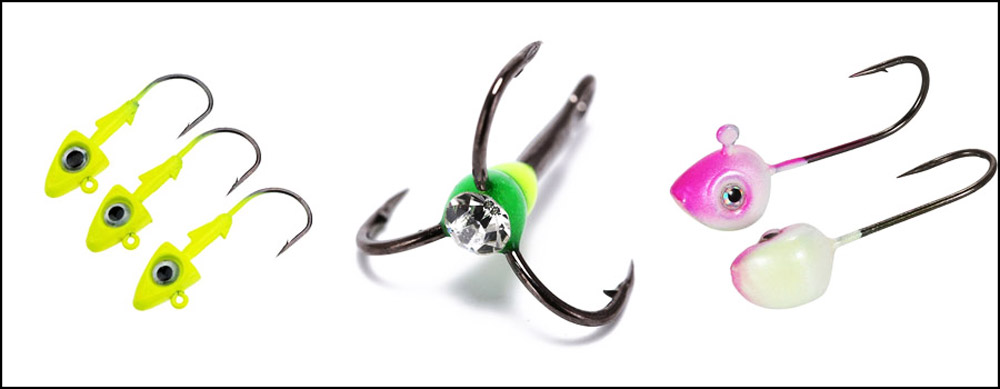
I want to present to you the most complete guide, reviews, and an idea for fishing hooks. For many, this topic at first glance seems complicated. Just read this material and much will become clear. There is one part of your whole fishing setup that you must set up correctly, this is a hook. They may seem simple, but there are as many kinds of fishing hooks as there are fish to catch. Theoretically, fishing hooks are the easiest part of your setup. They can be made from high-tech carbon fiber and must be invisible underwater. This is not an easily curved piece of metal with a pointed tip at one end.
However, the hooks have been honed and refined. Each part of the hook has its own specific purpose. Each style and form has its own place. Knowing how to use them is always a sure way to improve your game and improve your catch.
Fishing hooks are the most important tool in your box. Whether you are new to fishing or an experienced fishing enthusiast, investing in quality fishing hooks will help you catch valuable fish. Successful fishing expeditions require strong, sharp, durable, and reliable fishing hooks. Get to know the most popular types of hooks and how you should use them when fishing. By the end of this article, you will be ready to improve your game and improve your success on the water.
Hooks are an important part of your fishing arsenal. This manual describes the general terms used to describe fishing hooks and their meanings. This is important information you need to know so that you can make informed purchases when it’s time to stock up on hooks.
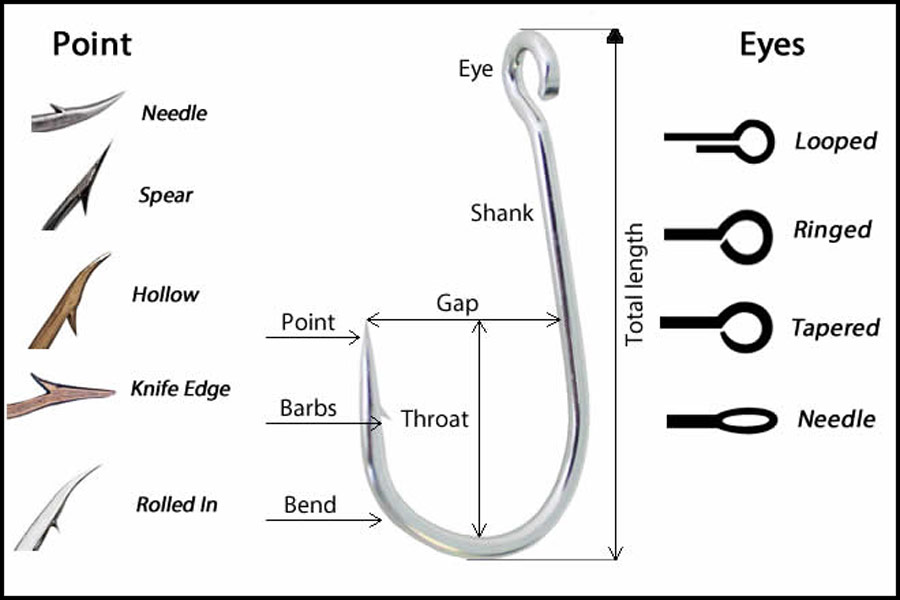
All hooks have an eye, a shank, a gap, a tip, and notches, but variations of these characteristics lead to dozens of types of hooks.
✅Eye: A ring that attaches a hook to a bait or fishing line. The eye is the point of connection with the fishing line or body of the bait. Ringed eyes are the most common. The metal is bent in a uniform loop, and the end sits flush with the shank.
✅Shank: The same as the throat, but on the blunt end. This is the length from the eye to the point where the bend begins. Shanks are short, medium, or long and have a big impact on how the hook is used. Short shanks are often used for professional fishing when a compact hook and minimum weight are critical. Middle shanks are the most common and are used in many fishing situations. Longshanks are used to match the long profile of the artificial bait.
✅Gap/Clearance: The distance between the throat and the shank. The gap is the size of the bend in the hook from the shank to its point. A medium-sized gap is suitable in most situations, but sometimes a large gap is required. A wide gap is used to equip bait with a thick body to ensure that the point of the hook is open on the set of hooks, and not limited by the volume of the bait.
✅Point: The sharp bit that pierces the fish’s mouth. This is the conical end of the hook and the sharp point penetrating the mouth of the fish. Forms can be different – a needle, a knife tip, a spear, or a roll. Quality hooks are packed extremely sharp and will hold the point longer than cheaper ones.
✅Throat: The part of the hook going down from the point.
✅Bend/Bending: where the hook bends back onto itself.
✅Barb/Thorn: spike facing back, preventing hook loosening. Prong – designed to hold the hook in place when it penetrates the fish’s mouth. The larger the beard, the more difficult it is for the fish to free the hook.
🟨Fishing Hook Sizes Guide
Understanding the size of fishing hooks can be confusing. The easiest way to remember how the sizes of fishing hooks work is to remember that small fishing hooks are numbered from 1 to 32, with 32 being the smallest size. Medium and large fishing hooks are indicated by sign 0, which appears before the number, such as 1/0, 2/0 … to 20/0, which is the largest size of the hook. To find the correct hook size, you simply look at the standard table of hook sizes and find the one that is suitable for the species you choose. To make your choice, I present the most important characteristics of them and explain what they mean.

On the left, you have sizes. On the right, you have “aughts”. The smallest hooks out there begin at around a size 30. The second-smallest is size 29, then 28, 27, and so on, running “Up” to size 1. After size 1, it switches to size 1/0 then 2/0, 3/0, all the way to 27/0, which we assume people use to catch literal sea monsters.
🟨Fishing Hook Sizing Chart

🟨Material
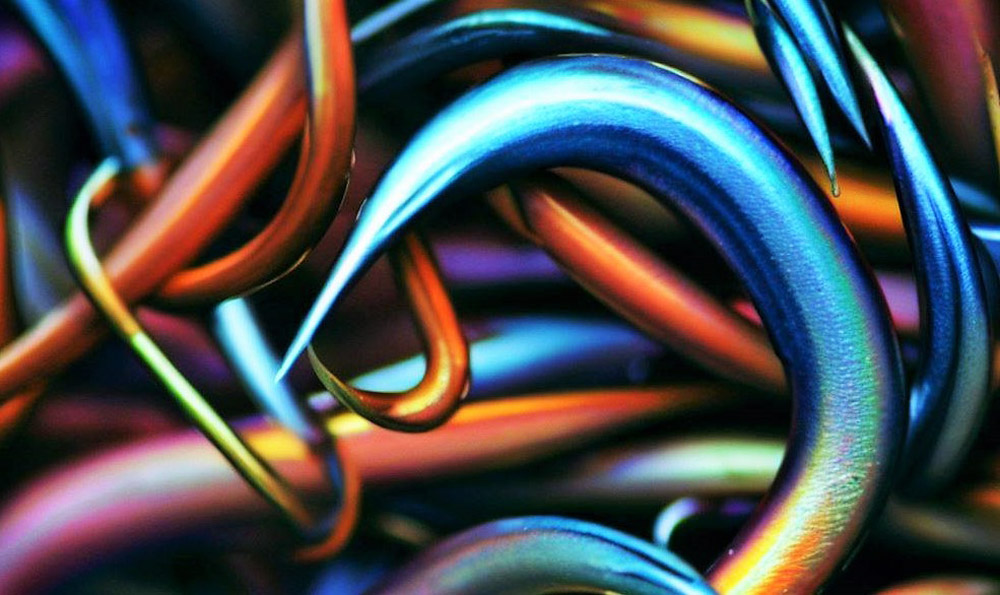
Modern fishing hooks should be made of strong and durable materials, such as high-carbon steel, alloyed with vanadium or stainless steel, depending on the application. Most high-quality fishing hooks have an anti-corrosion surface finish. Regardless of whether the hooks are made of steel or nickel, or they have a special coating or chrome finish, the main thing is that they are strong and reliable.
Corrosion resistance is necessary not only when using fishing hooks, especially in saltwater, but also during storage. In addition, coatings are applied to color or provide aesthetic value to the hook. Here are some additional solutions from hook manufacturers. Some manufacturers, such as the Norwegian company Mustad, use the unique Durasteel coating, which not only makes their fishing hooks heavy-duty but also gives the hooks a reflective sheen that is very effective in attracting fish.
Red fishing hooks, such as the Eagle Claw Fishing Hooks, are also a great choice, as the red color looks like a wounded bait, which is very effective in attracting the attention of neighboring fish. Freshwater fishing hooks are often coated with a clear coat. Also, such hooks can even be coated with Gold, Nickel, Teflon, Tin, and other various paints.
🟨Simple Guide to the Most Popular Fish Hook Styles
While there is a huge variety of special fishing hooks, the main groups of hooks form the basis for widespread use by experienced fishermen. However, there are several types of fishing hooks that every self-respecting angler should have in his box. Here is our selected shortlist of basic hooks. These are such fishing products: bait, circle, treble, and worm hooks.
Types of Fishing Hooks
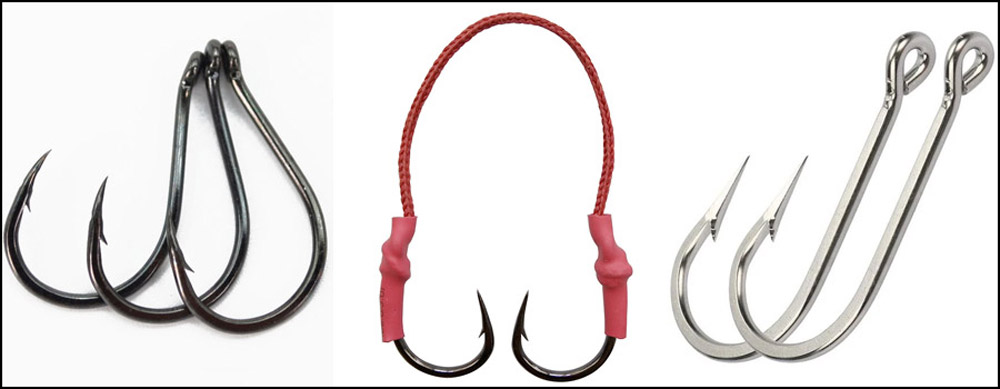
The Allure of Bait Hooks: Design, Size, and Applications
Bait hooks are perhaps the most traditional and commonly used type of fishing hook. They are designed to hold a variety of live and dead baits, from worms and insects to small fish and artificial baits. These hooks typically feature a longer shank to make baiting easier and to prevent the bait from being stolen. Bait hooks come in a vast range of sizes to suit different fish species and bait types. The size and shape you choose should correspond not only to the size of the fish you’re aiming to catch but also to the type of bait you plan to use.
Fly Hooks: Riding the Currents with Featherweight Champions
Fly hooks are uniquely designed for the artful sport of fly fishing, where the goal is to mimic the natural food of the fish — often insects — on the water’s surface or beneath. These hooks are lightweight and specifically designed to carry “flies,” which are lightweight artificial baits made from a variety of materials such as feathers and foam. The design of a fly hook often depends on the type of fly it is intended to carry, such as dry flies, wet flies, nymphs, or streamers. Fly hooks are available in a wide range of sizes and shapes, each serving a unique purpose within the diverse realm of fly fishing.
Lure Hooks: The Art of Deception in the Depths
Lure hooks, also known as treble hooks due to their three-point design, are typically attached to artificial lures to increase the chances of hooking a fish. Each of the three ‘arms’ extends from the center and curves back to meet at the point. Lure hooks can be found in a wide range of sizes to suit various lures and target species. These hooks are particularly effective when used with moving lures, as the triple-point design increases the chances of a successful hook-up.
Beyond the Ordinary: Unveiling the World of Specialty Hooks
There is a wide range of specialty hooks designed for specific fishing scenarios that don’t fit the traditional bait, fly, or lure categories. These include circle hooks, which are designed to hook a fish in the lip rather than the gut, reducing injuries and improving survival rates in catch-and-release scenarios. There are also octopus hooks, used for a wide range of species and often employed in drop-shot rigs; and Aberdeen hooks, known for their light wire construction, long shank, and unique bend, which is ideal for delicate bait like worms. The selection of a specialty hook will depend on your specific needs, target species, and fishing conditions.
Understanding the various types of hooks available and their ideal applications can dramatically improve your success rate and enjoyment of the sport. Whether you’re bait fishing, fly fishing, or using artificial lures, there’s a hook out there designed specifically for your needs.
Popular Fishing Hook Categories
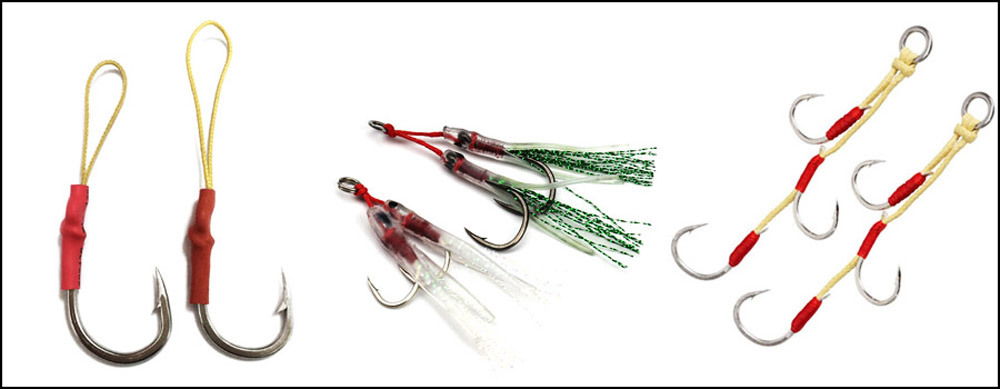
Let’s take a closer look at the base and extended hooks that you can add to your box.
1# Bait Holder Hooks – Most Used by Fishermen
View on BassPro View on Amazon
They ensure that your bait does not slip off the hook. They have tines on the shank to hold the bait in place, and a prickly point to catch on any fish that bites it. Lure holders are extremely effective, but their barbs can do a lot of damage to the fish when it is released. They are not the best choice if you plan to release your fish back into the ocean.
I repeat. Since lures come in different sizes and lengths, there are also many different styles of bait hooks. Bait hooks often have additional notches on the shank of the hook, as well as in the bend area. These extra tines help keep the bait hook. Bait hooks come in many styles. Most of them have teeth on the rod to hold the bait in place.
2# Circle Hooks – Maximum Safe for Fish
View on BassPro View on Amazon
Sharp-tip circular fishing hooks are also very popular with many fishing experts. Its shape often ensures that the point of the hook only snags onto the open surface, which is usually located in the corner of the fish’s mouth. This type of fishing hook is designed to hook into the corner of the fish’s mouth. This provides a more humane way of catching fish, especially if you want to release the fish safe and sound. Hooks for circular fishing have a more pronounced bend in the shank, without notches, which makes it easier to remove the fishing hook from the mouth of the fish.
His point leans towards the shank, which prevents them from entering deep into the throat of the fish. Instead, they engage on the tip of the mouth. Circular hooks require some fishing experience. You need to wait a bit until the fish swallows the bait firmly before you hook it, or pull it out of the mouth of the fish. The term circular hook refers to the special design of fishing hooks, due to which they look round. Used mainly for catching live bait, these hooks increase the percentage of the catch. When a strike occurs, the hook slides out of the throat of the fish. At this point, the hook point is rotated and set to a safe and reliable grip. Thorn does not penetrate deeply.
3# Double Hooks – Bait Holds Well
View on BassPro View on Amazon
This hook design looks like a triple but has only two points. Double hooks are great for use with thick soft plastic lures such as floating artificial frogs. This design makes it difficult for the bait to go without engagement.
4# Treble Hooks – Sweep Reliability
View on BassPro View on Amazon
Any angler will need triple hooks, which give triple chances of a hook since one of them will always be directed in the right direction. They do not tend to penetrate very deep into the intestines of fish. But they are difficult to use in the process without accidentally engaging in various objects. Such fishing hooks consist of three hooks that extend from one shank. These types of fishing hooks are mainly used with artificial lures. Since in many states of America it is forbidden to use a triple hook with an attached live bait.
These 3 hooks provide excellent bite coverage for fishing with artificial lures such as wobblers, jerk baits or topwater. The hook is very dynamic and effective for holding fish, as often there can be more than one hook in the fish’s mouth.
5# Siwash Hooks – Has a Straight Eye
View on BassPro View on Amazon
Siwash fishing hooks have a long shank and a straight eye so they sit properly on baits. Siwash hooks are often used on single-hook lures. These hooks are convenient for replacing triple hooks on hard baits when fishing, limiting the number of hooks on the bait.
6# Aberdeen Hooks – Does Not Damage Bait
View on BassPro View on Amazon
Aberdeen fishing hooks are made of lighter wire than Siwash hooks and are often used for bait fishing. The thin metal easily hooks the bait with minimal damage, so it remains alive. When hooked, you can sometimes bend the hook. Aberdeen hooks were popular as long as fishing was a sport. Their light wire and long shank allow you to securely fasten small live baits without damaging them. This allows them to live as long as possible.
7# Octopus Hooks – Has a Bent Eye
View on BassPro View on Amazon
This is one of my favorite hooks; they have a short shank with a slightly lower cross-section than the middle bait hook. The eye is directed away from the point of the hook, making it ideal for tying the knots of the egg loop, which are great for holding the bait. I use these hooks for various species, usually with smaller mouths, such as salmon, sea bass, trout. I would not recommend these fish hooks with largemouths.
The one who came up with the octopus hooks had one thing in mind: the natural presentation of small baits. Their short, rounded shank reduces size and weight while leaving enough slots to catch large fish. The point bends slightly on the hook of an octopus. Octopus fishing hooks look like round fishing hooks. They come in both traditional and circular styles. The difference between a circular hook and an octopus circular hook is that the end of the eye deviates back and the hook has a more cone-shaped point.
They are specially designed for live bait and work well with small bait, such as worms or small minnows. Octopus hooks are often used for bait fishing when the minimum weight and size of the hook are necessary for a natural view.
8# Worm Hooks – Wide Gap and Bend
View on BassPro View on Amazon
If you like to fish use plastic worms. A bend near the eye holds the head of the worm in place. A point pierces the body, waiting to capture an unsuspecting fish. The rest of the bait hangs loose. This allows him to move freely and naturally.
There are many characteristics when it comes to worm hooks: weighted, very wide gap, different eyes, etc. I use them most often when catching large types of mouth, such as sea bass, and for plastic lures. Worm hooks usually have a wider gap that provides gap between the eye and the hook point, so that they can hold these large plastic worms, tubes, living things, etc.
It should be noted that the worm hooks have a slight bend just below the eye for Texas rigging. Most worm hooks have wide gaps to provide sufficient clearance for the point of entry into the fish. These hooks are quite durable and have a good penetrating ability to fish.
9# Jig Hooks Fishing – Right Angle to the Shank
View on BassPro View on Amazon
These hooks are as simple as effective. The eye is set at right angles to the shank to increase the movement of the bait in the water. Jig fishing hooks are the most common type of fishing hooks. They are highly valued for their durability and sharpness, as well as their design for continuous connectivity.
The jig hook has a standard 90-degree bend, around the offset eye, and a razor-sharp notched edge. Fasteners are also available in a variety of styles, such as wide-gap clamping devices, weed-free clamping devices, removable clamping devices, thick wire, and light-wire clamping devices. A jig hook is a basis for many lure options. Jig fishing hooks are made in special molds. The main thing is that they have a bend just below the eye, the most common is an angle of 90 degrees.
Guide to Special Fishing Hooks and Their Use
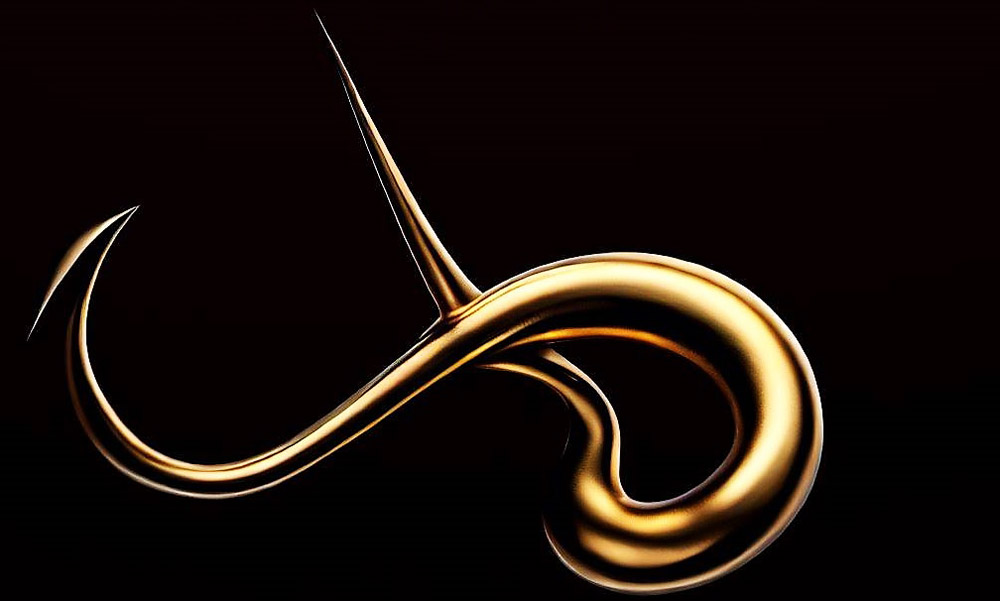
Fishing tactics are becoming more diverse and complex. Unsurprisingly, hooks are becoming more sophisticated to keep up with these innovative processes. The following is a selection of popular unique fishing hooks.
10# Drop-Shot Hooks – Special Mount
View on BassPro View on Amazon
Straight-line hooks are designed to snap to a line using the Palomar assembly. They sit at an angle of 90 degrees from the line, which is below the sinker below the line and is equipped with elegant plastic.
11# Weedless Hooks – Have a Protective Cover
View on BassPro View on Amazon
Weed-free hooks are a favorite of Bass anglers around the world. They are used in lakes and ponds where you fish among dense vegetation. They have a thin shield that attaches to the point. This gives you the opportunity to not cling to obstacles in the path of movement of the bait. At the same time, it is fixed easily enough so that it comes off as soon as the fish accepts your bait. Weed-free hooks are equipped with a plastic or wire guard that protrudes in front of the hook. They help prevent weed clogging, making it much easier for you to fish.
12# Trailer Hooks for Spinnerbaits – Has a Protective Tube
View on BassPro View on Amazon
The Spinnerbait Hitch feature is an oversized eye with a protective tube that slides over the hook to increase the impact and accuracy of the fish hook.
13# Keeper Hooks for Fishing – Has an Extra Shoot
View on BassPro View on Amazon
Keeper hooks have a small serrated hand that connects to the hook eye. The tooth is inserted into the nose from a soft plastic bait. The hook point is stuck below in a plastic case. This allows a direct presentation. These hooks are extremely popular for equipping floating lures.
14# Dressed Treble Hooks – Has Extra Feathers
View on BassPro View on Amazon
Dressed with a triple, just triple hooks with feathers and tinsel tied on their cuttings. They can be used to replace the rear hook with hard baits such as jerk baits and spoons. Feathers play in the water, a bright color increases the attractiveness of the bait, pulsating and flashing when manipulating the bait.
Choosing the Right Fishing Hook

Match the Hatch: Choosing Hooks Based on Fish Species
Selecting the right fishing hook is not a one-size-fits-all endeavor. The type and size of the fish you’re targeting significantly influence your hook choice. Larger fish species with tougher mouths, such as bass or catfish, require sturdy hooks with sharp points and possibly larger gaps. In contrast, smaller species with delicate mouths, like trout, might be better suited to finer, smaller hooks. Each fish species also has different feeding habits and behaviors which influence the type of hook you should use. For example, circle hooks work exceptionally well for species that tend to swallow the bait, such as catfish or carp, as they are designed to hook in the corner of the fish’s mouth.
Hook, Line, and Sinker: How the Environment Influences Your Hook Choice
The environment you’re fishing in also plays a vital role in hook selection. In saltwater, hooks need to be resistant to corrosion, hence stainless steel or coated hooks are preferred. For freshwater fishing, a wider variety of hooks can be used since rust is less of a concern. Additionally, in areas with dense vegetation or structures, you might consider weedless hooks that prevent snagging.
Bait and Switch: How Bait Type Affects Hook Selection
The type of bait you’re using should also guide your hook choice. Live baits require hooks that both secure the bait and allow it to move naturally, such as live bait hooks or circle hooks. In contrast, if you’re using artificial lures, treble hooks or single hooks specifically designed for lures would be a better choice. For fly fishing, the type of “fly” you are using would dictate the shape and size of your fly hook.
Tuning Your Tackle: The Role of Personal Preference in Hook Selection
Finally, your personal skill level and preferences play a significant role in hook selection. If you’re a beginner, simple bait hooks might be the best starting point. As you gain experience and start targeting specific species in diverse environments, you might develop a preference for certain hook types. Some anglers prefer barbless hooks for their ease of unhooking, especially for catch-and-release. Others might swear by a certain hook brand due to past successful experiences.
Selecting the right hook is a complex process that combines knowledge of fish species, understanding of the environment, consideration of bait types, and personal preferences. As you gain more experience and knowledge, you’ll be better equipped to choose the perfect hook for every fishing situation.
A Comprehensive Guide to Setting a Fishing Hook: Knots and Rules for Tying Hooks
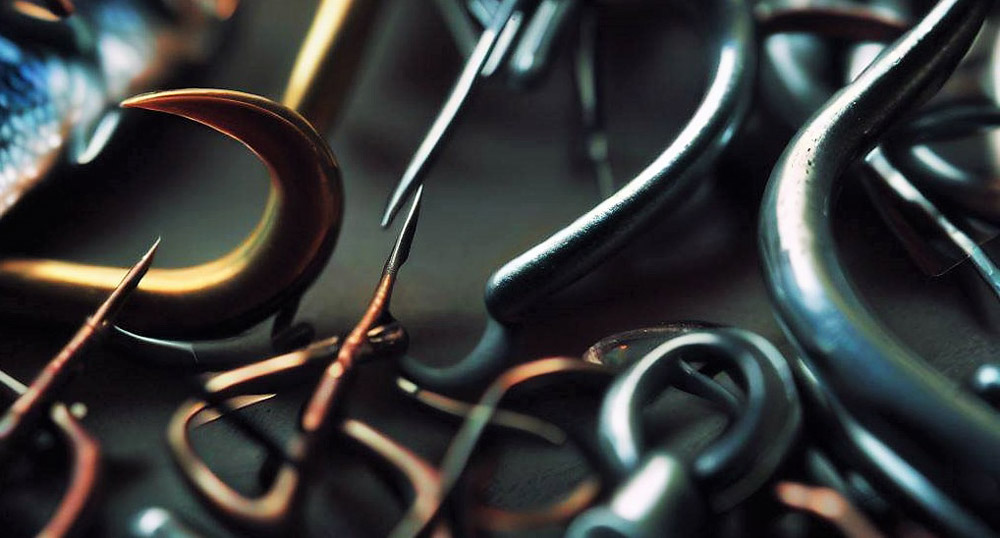
Fishing hooks are the crucial link between the angler and the fish. Setting up a fishing hook involves attaching it to a fishing line, a process that requires proficiency in tying fishing knots. This guide will take you through the process of setting up a fishing hook, including the basic fishing knots and the essential rules of tying hooks.
Setting a Fishing Hook
🟫Select the Right Hook: Choose a hook that suits the type of fish you’re targeting, the bait you’re using, and the fishing technique you’re applying.
🟫Thread the Line: Run your fishing line through the eye of the hook. This is the small round part at one end of the hook.
🟫Tie the Knot: This is where your knowledge of fishing knots comes into play. Below are three basic knots that every angler should know.
Basic Fishing Knots
☑️The Clinch Knot: The Clinch Knot is a popular choice for attaching a hook to a fishing line. Here’s how to tie it:
- Thread the line through the hook’s eye and double back parallel to the standing line.
- Twist the tag end around the standing line five to seven times.
- Pass the tag end through the loop near the eye of the hook, then through the big loop you just formed.
- Pull the tag end to tighten the coils, sliding them against the eye of the hook.
- Finally, clip off the excess tag end.
☑️The Palomar Knot: The Palomar Knot is another simple yet strong knot.
- Double about 6 inches of line and pass the loop through the hook’s eye.
- Tie an overhand knot with the doubled line.
- Move the loop over the hook.
- Pull both ends of the line to cinch down the knot, then trim the tag end.
☑️The Uni Knot: The Uni Knot is versatile and holds well.
- Pass the line through the hook’s eye, double back parallel to the standing line, and form a loop.
- Make 6 turns with the tag end around the double line and through the loop.
- Pull the tag end to tighten the knot, then slide it down to the eye of the hook.
- Trim the tag end.
Basic Rules of Tying Hooks
🆘Practice Regularly: Practice tying your knots frequently. Regular practice will help you tie them quickly and securely even in poor lighting or wet conditions.
🆘Inspect Your Knots: Always inspect your knots to ensure they’re secure. A poorly tied knot can result in a lost tackle or, worse, lost fish.
🆘Lubricate Your Knots: Before you cinch a knot, lubricate it with saliva or water to prevent damage from friction heat. This also allows the knot to tighten more evenly and securely.
🆘Trim Your Tags: Always trim the tag end of your line close to the knot. This prevents it from catching on debris or spooking fish.
🆘Test Your Knots: Pull on your knot to make sure it’s secure. It’s better for a knot to fail during testing than when you have a fish on the line.
Tying a fishing hook correctly is a fundamental skill that can significantly impact your success as an angler. By learning these basic knots and rules, you’re setting the foundation for a fruitful fishing experience. Remember, patience and practice are key, and in time, you’ll be tying knots like a pro.
A good rule is not to rush. When the fish starts to peck and pull the bait, you need to wait a few seconds and feel the weight of the fish before finally hooking it. If the fish is careful and just taps on your fishing line and bites slightly without biting the bait, it is better to wait. Let the fish take the bait, and then set the hook after you feel its weight. For the best results, be sure to use the correct fishing hook setting. To help you better understand how to install the hook, pay attention to the common signs by which a fish bites. For example, when your float is completely submerged in water, you feel that jerks or fishing lines begin to move on the line.
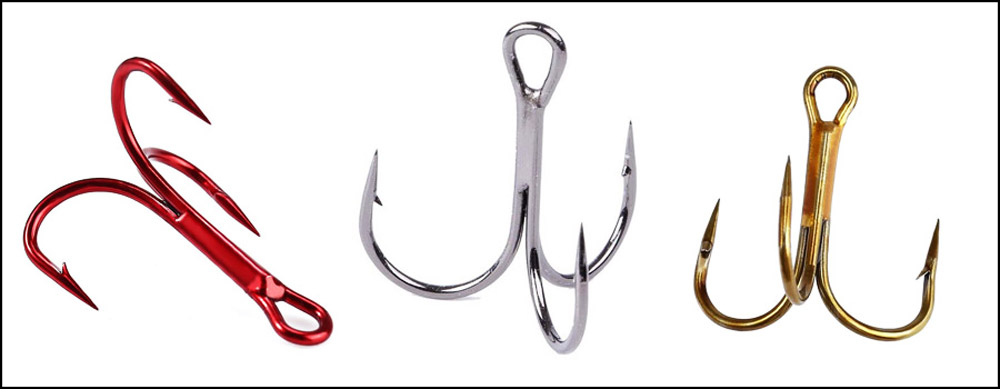
How to hook a fish correctly
Another rule – constantly remove the sagging fishing line and keep it at an angle of 45 degrees above the bait in tension. This helps increase sensitivity, allowing you to feel the bite of the fish and be in a better position to set the hook. When installing the hook, you must briefly and sharply make the rod move upward, using sufficient force to let the tooth pass through the mouth of the fish.
It is important to feel and determine the bite of the fish. It is necessary to be able to distinguish jerking fishing lines from the flow of water or waves. The more you know about the types of fish that you need and the more time you spend in water classes, the better you get the result. Fish with hard mouths needs a rigid set of hooks, while fish with soft mouths do not need a rigid set of hooks. If you pull the fishing line and set the hook too tightly, it can break out of the fish’s mouth.
Maintenance and Conservation
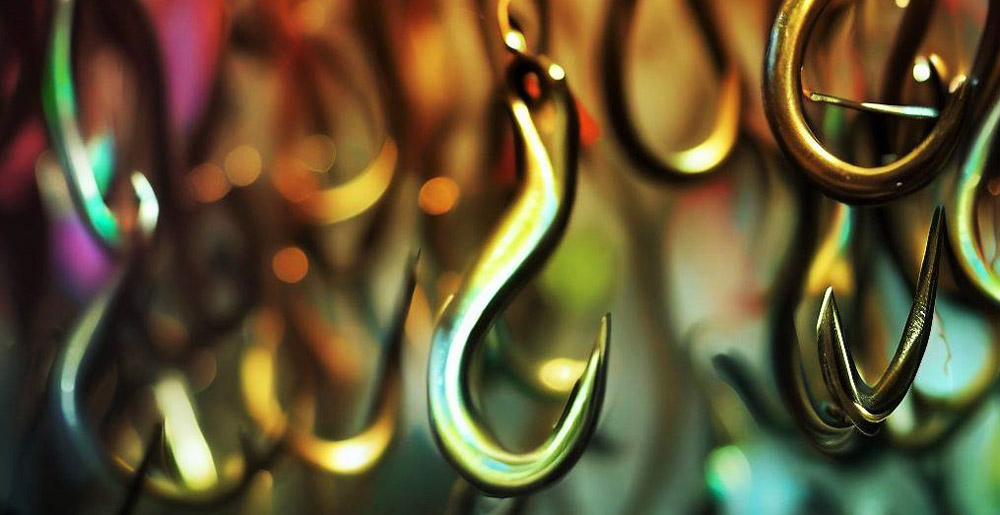
Keeping It Sharp: Maintaining Your Hooks for Optimal Performance
Proper maintenance of your fishing hooks not only extends their lifespan but also ensures they’re always ready to perform when needed. After each fishing trip, clean your hooks thoroughly to remove any debris or salt, especially if you’ve been fishing in saltwater. Drying them properly is essential to prevent rusting.
Additionally, routinely check your hooks for dull points. A dull hook can drastically reduce your chances of a successful catch. Learn how to sharpen your hooks correctly — a few skillful strokes with a hook sharpener can make all the difference. And remember, storage is also a part of maintenance. Keep your hooks organized in a dry, cool place, preferably in a tackle box with separate compartments.
Casting Responsibly: Ensuring Your Hook Usage Protects Our Waters
Responsible hook use is an integral part of sustainable fishing. Properly disposing of old or unwanted hooks is crucial to prevent them from becoming a hazard for wildlife or other anglers. Never leave your hooks in the environment; instead, take them home for disposal or recycle them if facilities exist. If a fish swallows the hook, cut the line as close to the hook as possible — the hook will eventually corrode, or the fish can expel it.
Fishing for a Brighter Future: Advocacy for Conservation in Hook Use
Catch and release practices have become more common among anglers worldwide, contributing to fish conservation. Using barbless hooks can help ensure the survival of the released fish, as they cause less damage and can be removed more quickly, reducing the stress on the fish. It’s also worth considering circle hooks, which are designed to hook the fish in the mouth, reducing internal injuries.
Apart from the choice of hooks, respect size and bag limits, and adhere to closed seasons. These regulations help maintain healthy fish populations.
As stewards of the environment, every angler has a role to play in ensuring the sustainability of our waterways for future generations. By maintaining our equipment, using our hooks responsibly, and advocating for conservation-minded practices, we can all contribute to this goal.
What is Important to Look for in Quality Hooks
- High-quality and matte pointed tip: this can eliminate the need for frequent sharpening.
- Strong but flexible: give the hook enough to not break or pry out the fish’s mouth.
- Prices may vary greatly. Cheap hooks are rarely good. The criterion is a reliable and well-known brand.
- Take an inventory of your equipment and accessories. Buy what you like and not enough to fish. The success and enjoyment of fishing depend on such a small detail.
To conclude this review, I’m giving you a complete list of types of fishing hooks that you may need:
| 1 | 2 | 3 |
|---|---|---|
| Bait Hook | Narrow Bait Hook | Jig Hook |
| Wide Gap Hook | Weedless Wide Gap Hook | WeedLess Hook |
| J Hook | Aberdeen Hook | Siwash Hook |
| Keel Fly Hook | Circle Hook | Weighted Worm Hook |
| Worm Hook | Octopus Hook | Sickle Hook |
| Round JigHead | WeedLess Round JigHead | Twist Shaky JigHead |
| Weighted Offset Joint Hook | Treble Hook | Weighted Treble Hook |
| Double Hook | Bullet JigHead | Umbrella JigHead |
| Shaky Worm JigHead | JigHead Hook |
Appendices and Further Reading
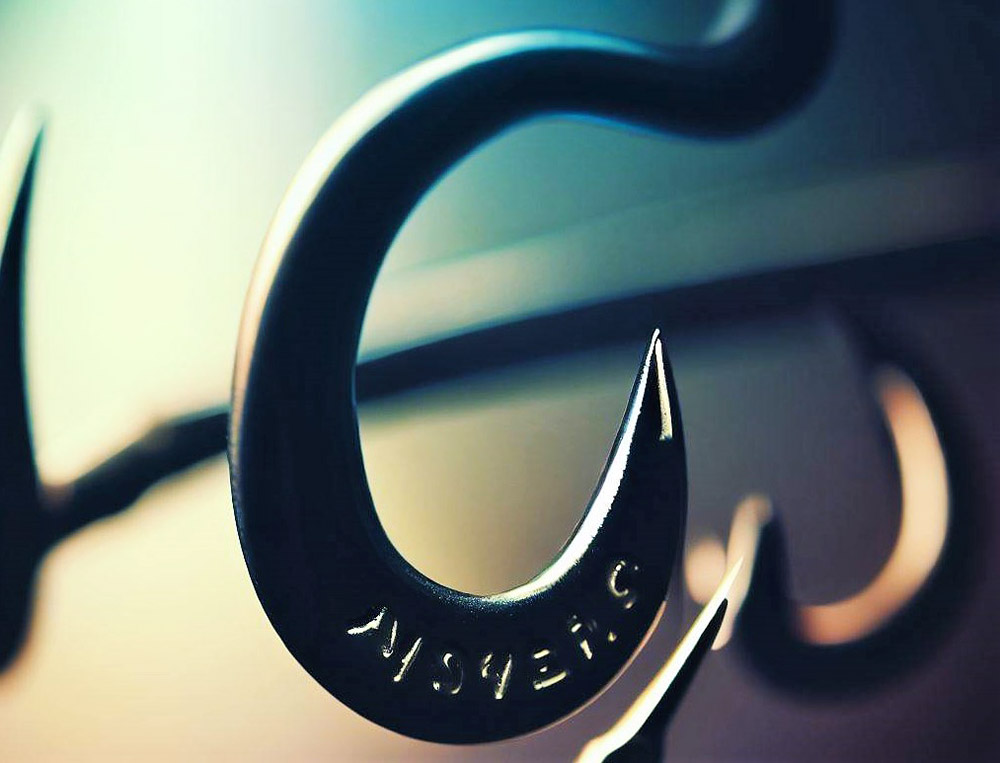
Hooked on Sizes: A Comprehensive Hook Size Chart
A fishing hook size chart is an invaluable tool for any angler, whether you’re a novice or an old hand at the sport. These charts provide a clear visual reference for understanding hook sizes, which, surprisingly, become smaller as the number gets larger until it reaches a certain point (usually size 1), then it starts getting larger as the number increases. Having a printed chart or digital reference easily accessible can make selecting the right hook size for your intended catch much simpler.
Untangling the Jargon: A Glossary of Fishing Hook Terms
While this article has aimed to clarify a lot of the terminology around fishing hooks, a glossary can further ensure you understand all the ins and outs. Key terms such as “barb,” “shank,” “eye,” “gape,” “bend,” and “point” are integral to understanding the anatomy of a hook. Additionally, hook types like “J-hooks,” “circle hooks,” “treble hooks,” “bait hooks,” and “lure hooks” are crucial for comprehending their applications. A glossary offers a concise definition of each term and can be an excellent resource for beginners and a quick reference for experienced anglers.
Keep the Adventure Going: Resources for Further Reading on Fishing Hooks
If you’re eager to delve even deeper into the art of fishing and mastering the use of fishing hooks, there are numerous resources available. Books such as “The Total Fishing Manual” by Field & Stream, “The Little Red Book of Fly Fishing” by Kirk Deeter and Charlie Meyers, and “The Complete Guide to Freshwater Fishing” by The Editors of Creative Publishing offer comprehensive guides and tips.
For those who prefer online resources, websites like Bass Pro Shops’ “1Source” offer numerous articles and tutorials on various fishing topics, including detailed guides on fishing hooks. Additionally, online fishing forums and communities can provide a wealth of information, firsthand experiences, and advice from fellow anglers around the world.
The journey of fishing is one of continuous learning, and with these resources at your disposal, you’re well-equipped to navigate your way to becoming a master angler. Remember, every line cast is a new opportunity to learn and grow.
FAQ: Exploring the World of Fishing Hooks
Conclusion: A Deep Dive into Fishing Hooks
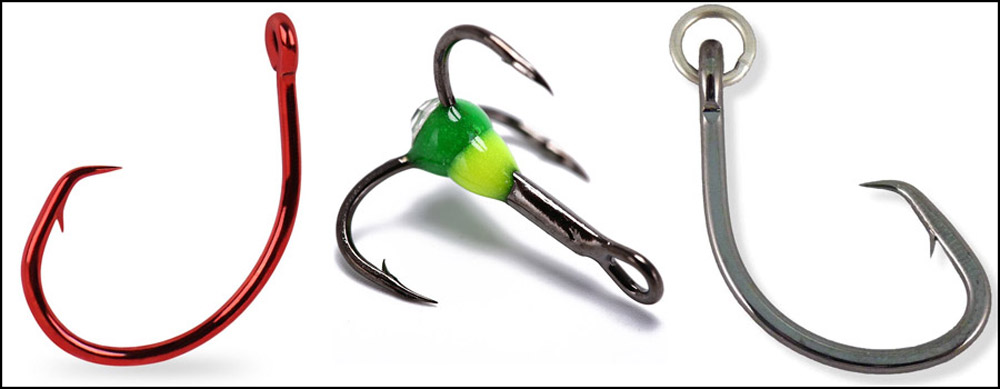
Reeling It In: Reflecting on Our Deep Dive into Fishing Hooks
As we’ve navigated through this comprehensive exploration of fishing hooks, we’ve uncovered the fascinating history of these essential tools, their complex anatomy, and the numerous types designed for various fishing scenarios. We’ve also examined the many factors that come into play when choosing the right hook, including fish species, environment, bait type, and personal preference. Furthermore, we’ve emphasized the importance of proper maintenance of your hooks and the role of responsible hook usage in conservation efforts.
Casting a Wider Net: A Call to Action for Thoughtful Hook Selection and Use
Fishing hooks may be small, but their significance in the grand scheme of fishing is enormous. Therefore, as you progress in your angling journey, take the time to consider your fishing hook choices carefully. Remember to apply your knowledge, experiment with different hooks, and find what works best for your style of fishing.
More importantly, let’s continue to uphold sustainable fishing practices. Choosing hooks that minimize harm to fish, especially if practicing catch and release, is a vital part of preserving our precious aquatic ecosystems for generations to come. Keep learning, keep evolving, and remember, every great angler was once a beginner who never gave up.
The Final Cast: Signing Off on Our Journey Through the World of Fishing Hooks
As we draw this discussion to a close, it is my hope that you carry forward the insights gleaned from this deep dive into the world of fishing hooks. Embrace the art and science of fishing, the nuances of every hook, the thrill of every catch, and the respect for every release. In the words of the old adage, “Give a man a fish, and you feed him for a day. Teach a man to fish, and you feed him for a lifetime.” Here’s to your lifetime of successful, responsible, and enjoyable fishing.
Tags: #fishing hook / #how to tie a fishing hook / #fishing hook sizes / #fishing hook knots / #best fishing hooks / #fishing knots for hooks / #how to tie two fishing hooks on one line / #types of fishing hooks

I live in Tenerife (Canary Islands) for the last 10+ years and share my daily fishing experiences on my website. Many years of personal experience as a fisherman and the vast experience of my friends allow me to write professionally on any fishing topics (from choosing a flashlight and equipment to deep-sea fishing).
All of my advice is based on practical real-world experience and will be useful to both novice anglers and professionals. Read more about the author.
Affiliate Disclosure: FishReeler.org sometimes gets paid for listings, through sponsors or affiliate programs like Amazon, Ebay, Cabelas, Bass Pro Shop, Shimano, Daiwa, Rapala, Renn, Okuma, KastKing, etс. Clicking a link helps keep FishReeler.org free, at no extra cost to you!
About the author: Each article is verified by the fishing expert Sergio Smirnoff. The articles are written by professional and amateur fishermen with 20+ years of fishing experience.
Note: The views and opinions expressed in this article are those of the authors and do not necessarily reflect the official policy or position of any agency. The articles are for informational purposes only, share your opinions in the comments and join the fishing discussions, let's share our fishing experiences together!

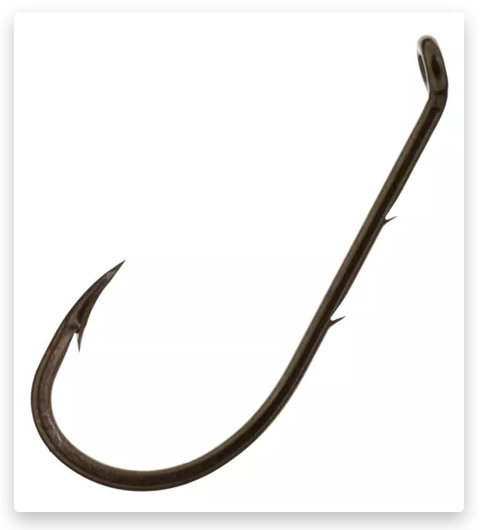
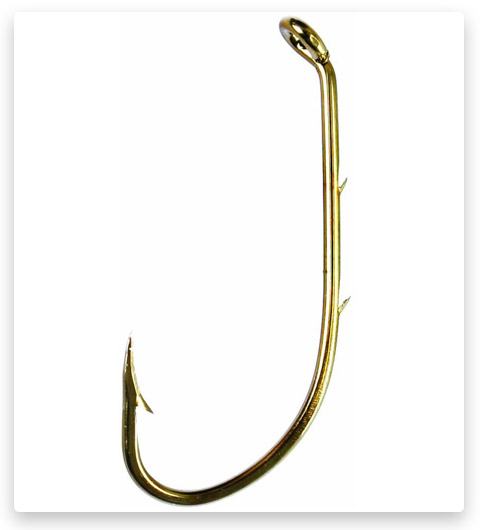
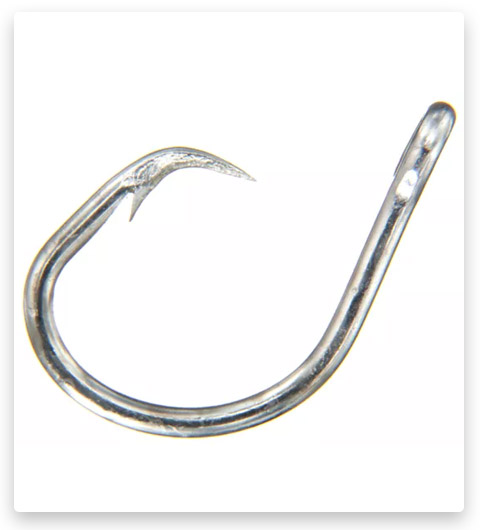
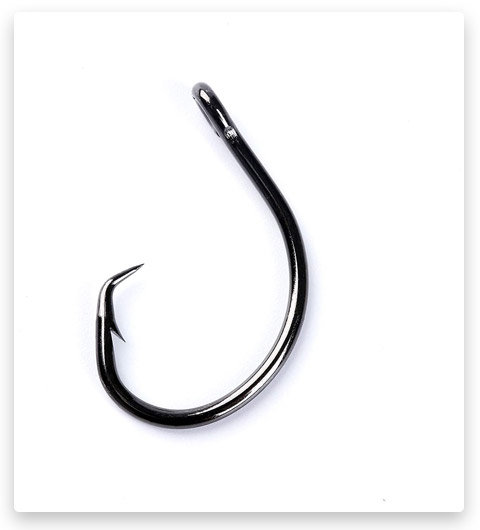


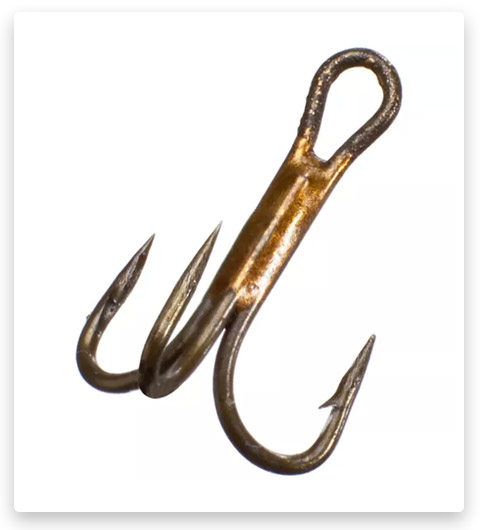
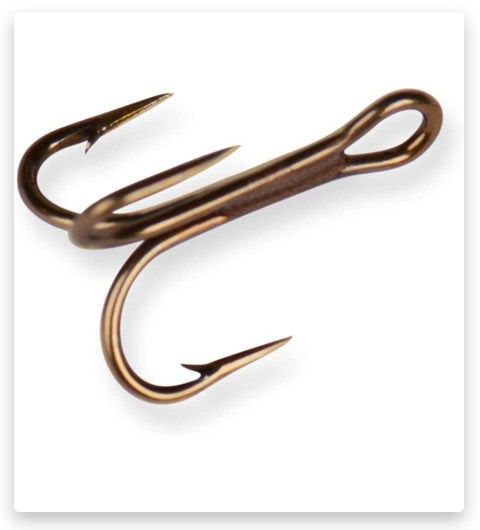
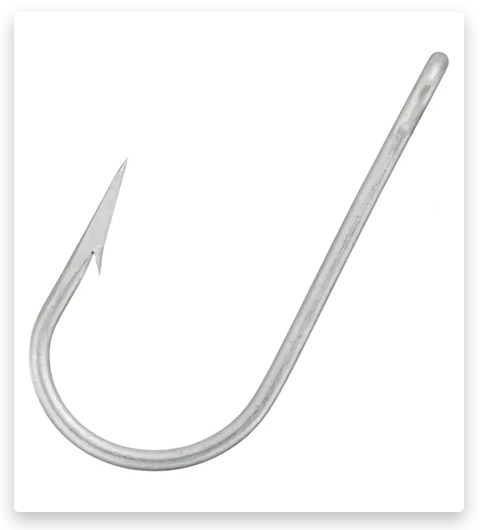
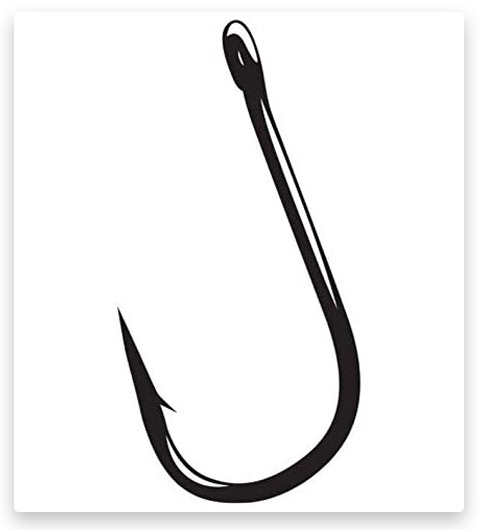
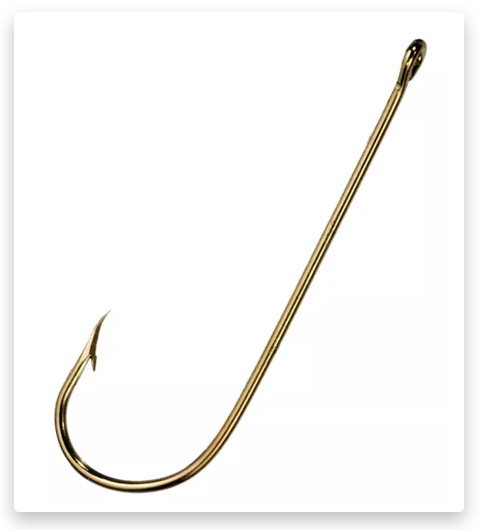
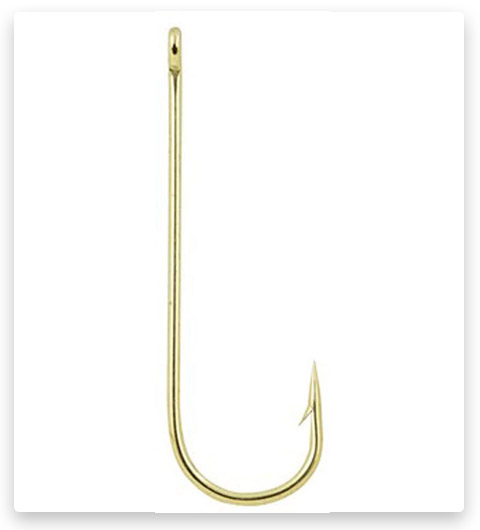
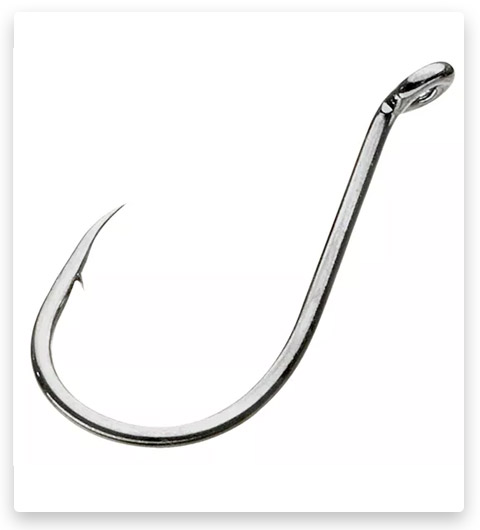
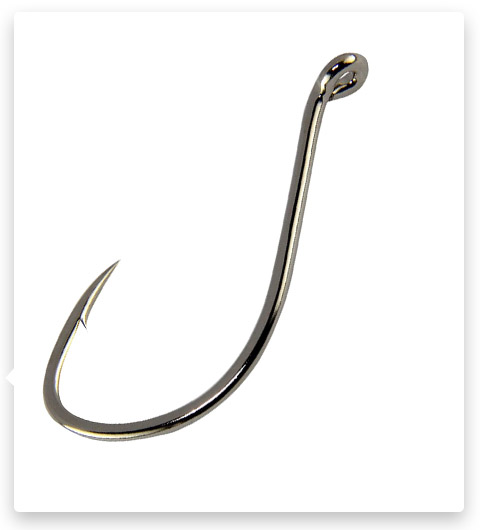
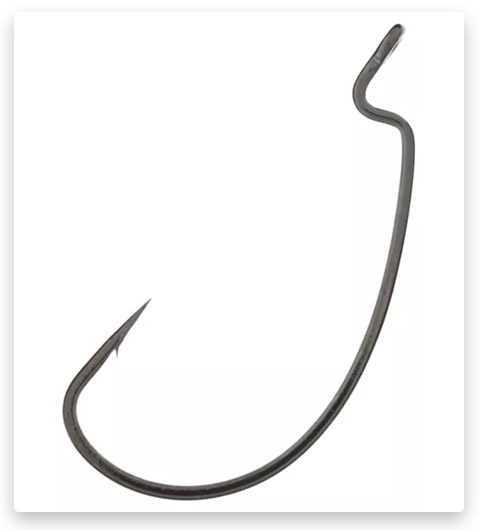
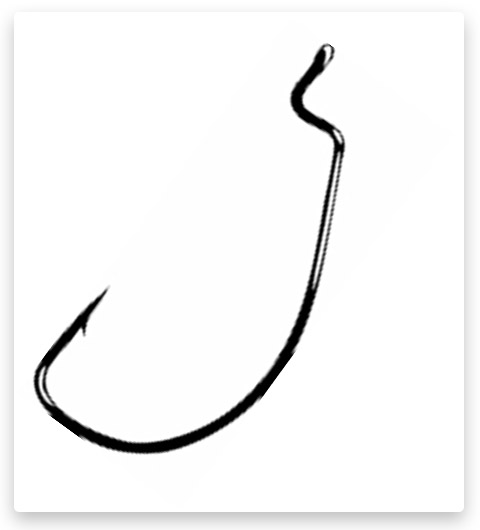
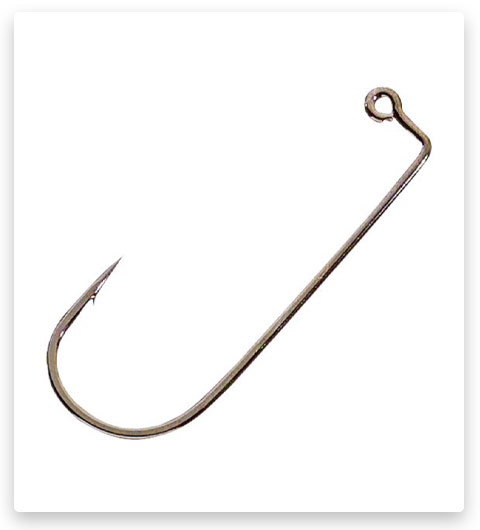
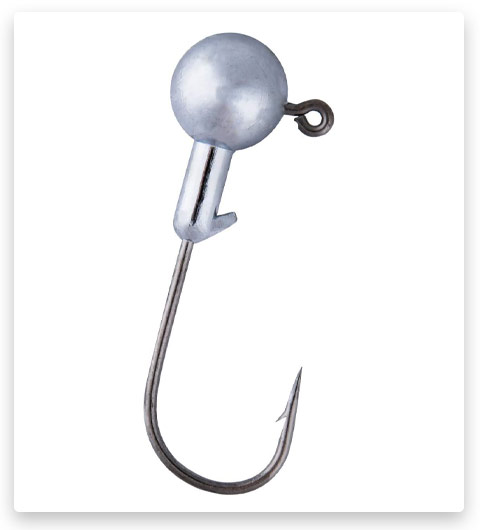
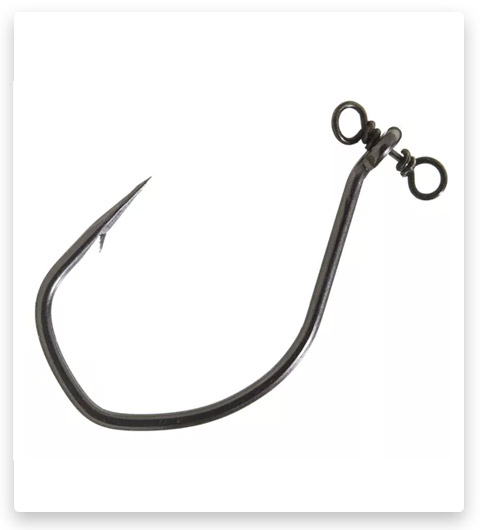
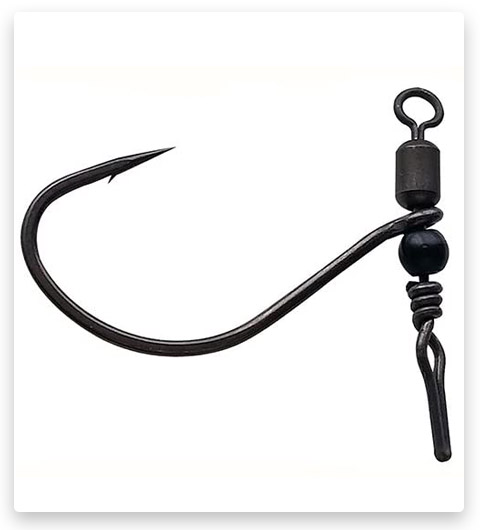
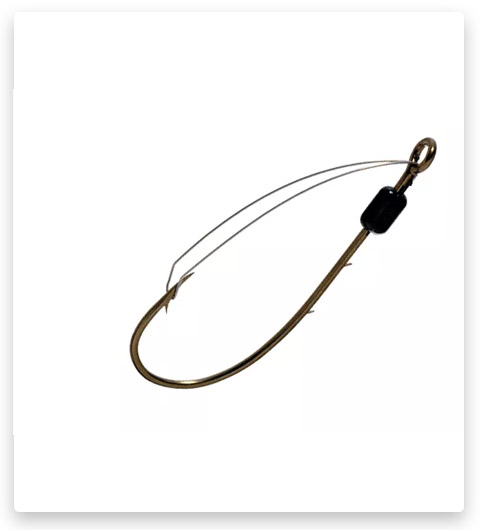
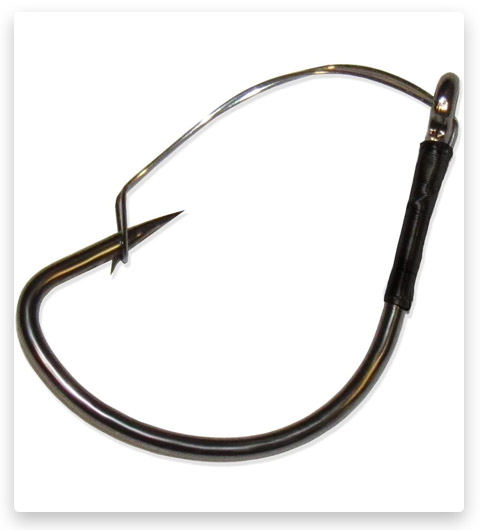

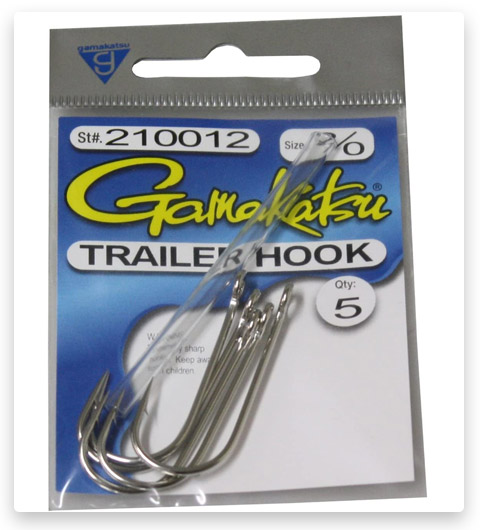

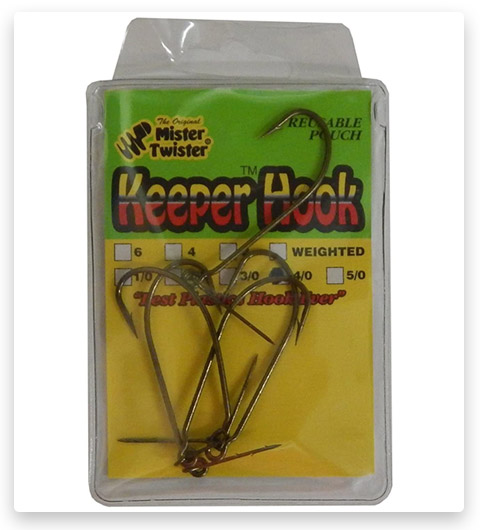
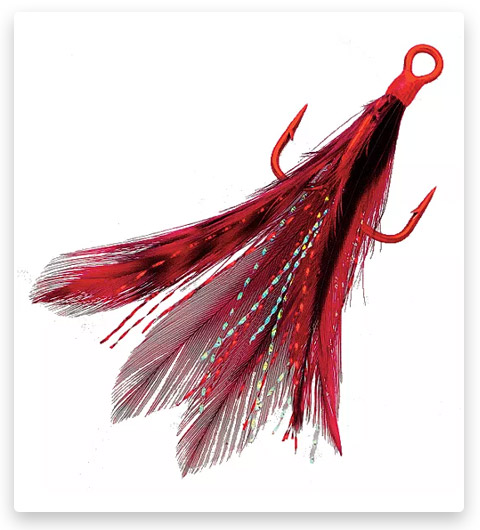


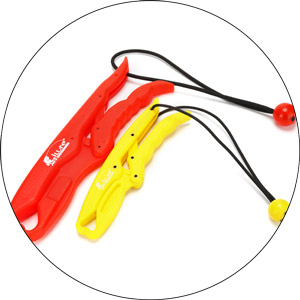
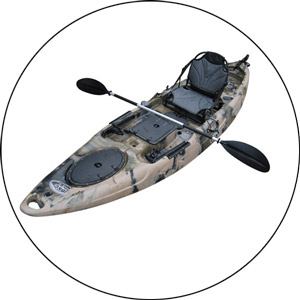
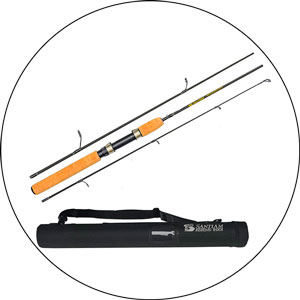
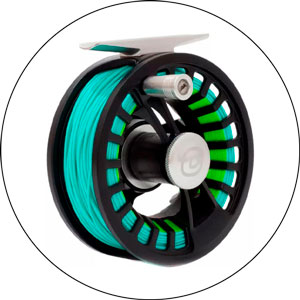
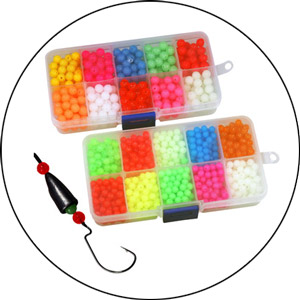
The way this article is written makes the history of fishing hooks sound like an epic journey, which it undoubtedly is. From simple materials like bone and wood to high-tech modern designs, it’s clear that every hook carries a story of human innovation and passion for fishing.
The overview of fishing hook components is fantastic. It’s easy to underestimate the complexity of a fishing hook, but understanding each part has improved my knowledge and will undoubtedly enhance my future fishing experiences.
Thank you for including the part about responsible fishing practices. As we enjoy the sport, it’s critical to remember our duty to the environment and the importance of minimizing harm to fish. The evolution of Hooks to support this cause is a testament to human ingenuity and responsibility.
The section about the Industrial Revolution’s impact on fishing hooks was particularly interesting. I never realized the vast influence of the period on something as simple yet essential as a fishing hook. The advancements in technology truly changed the game for anglers everywhere.
I’ve always struggled with understanding the different components of a fishing hook and its functions, but the explanation given in this article is crystal clear. I can now confidently discuss the bend, shank, barb, and more. It’s fascinating to realize how much science and design go into these tiny tools.
As someone relatively new to the fishing world, I found this article incredibly informative. I’ve always seen the hook as a mere tool, but understanding its evolution and the thought that goes into its design makes me appreciate the sport even more. I am definitely going to be more mindful when selecting hooks in the future.
What a wonderfully crafted article! As an angler for over a decade, I can honestly say I never stopped to consider the rich history behind the humble fishing hook. Your deep dive into this subject was enlightening and genuinely added a new layer of appreciation for my next fishing trip.